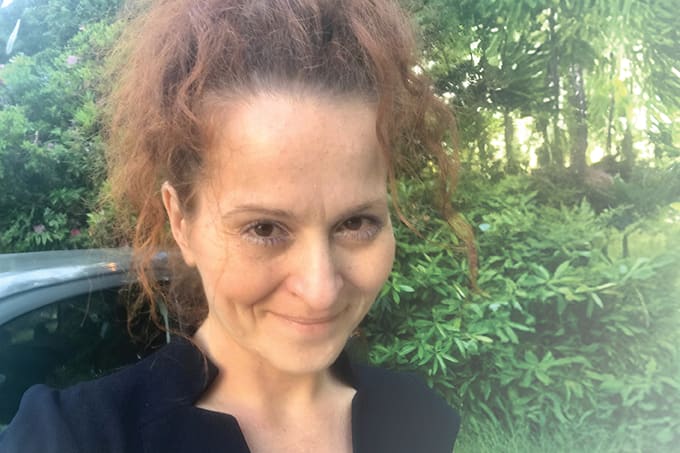What inspired the invention of Immunoscore?
I wanted to demonstrate the importance of pre-existing immunity in cancer. At the time, the accepted hallmarks of cancer didn’t even include the possible role of the immune system. We began a massive analysis of immune cells in large cohorts of patients to decipher the immune microenvironment using quantitative assessment of immune subpopulations within tumors – that is, quantifying immune cells using digital pathology and image analysis. We showed the significant contribution of memory T cells to the prevention of early-metastatic dissemination (1), and that numbers of adaptive immune cells were better predictors of the clinical outcomes for colorectal cancer than all traditional histopathological parameters (2). We validated our findings in several further studies (3,4).
The gold standard classification (AJCC/UICC-TNM) provides useful, but still incomplete, prognostic information. New ways to classify cancer focus on tumor cells, including molecular pathways, mutation status, and tumor gene expression-based stratification – but have shown only moderate prediction accuracy and limited clinical usefulness so far. Seeing the importance of pre-existing immunity, we knew we needed an immune assay to classify cancer patients in routine clinical settings.
And that’s why we developed Immunoscore, an immunohistochemistry-based immune assay whose prognostic power has been defined, harmonized, and validated in colon cancer patients by an international consortium (5). It provides doctors with a comprehensive picture of patients’ immune responses, enabling them to classify cancers more precisely to provide the most effective therapies. The assay has given us a completely different view of cancer – now, we know that these pre-existing adaptive immunity markers are not only prognostic, but can also predict response to treatment (6).

What surprises did you encounter along the way?
In 2005, we predicted one of two things: either that the immune system played no major role in preventing early-metastasis invasion and prolonging survival, or that the pro-tumoral innate immune system would have a negative effect. In fact, we found that quite the opposite was true! Patients with high densities of pre-existing T cells showed better long-term survival (2).
As a result, we proposed the now widely embraced concept of tumor immune contexture – the immune parameters associated with survival. It was particularly unexpected that all traditional histopathological parameters (T-stage, N-stage, grade of differentiation, venous emboli, lymphatic invasion, perineural invasion, microsatellite instability) depend upon pre-existing immunity (6,7,8,9).
What advice do you have for aspiring inventors?
Don’t be afraid to push the boundaries and introduce novel paradigms.

What inspired the invention of ISET?
The invention of the Isolation by SizE of Tumor cells (ISET) technique was inspired by the need to extract extremely rare circulating tumor cells (CTCs) from blood without any loss – and while keeping them intact for further analyses of their morphology and molecular content. At the time of the invention, our team had tested myriad other possible approaches to isolate CTCs, but all had failed.
In fact, circulating tumor cells are very rare – only a few mixed in with billions of blood cells – and extremely fragile; they can be destroyed by the manipulation needed to extract them. Furthermore, they do not have specific protein markers on their surfaces to allow us to “fish” them efficiently out of blood. Therefore, we had to come up with a different way to reach our goal. We decided to leverage a physical characteristic common to all tumor cells – the fact that they are significantly larger than blood cells.

What surprises did you encounter along the way?
The most surprising aspect was the combination of two challenges: the extreme heterogeneity of blood samples and the fragility of the CTCs themselves. These obstacles forced us to test hundreds of conditions to find the combination that allowed us to achieve our goal: extracting even a single tumor cell from blood without any damage.
What advice do you have for aspiring inventors?
My advice for those who want to find new routes to solving problems is to read all of the literature, consult experts on the subject, keep an open mind, and then carry out tests tirelessly, learning from mistakes until you hit your goal. Don’t be afraid of despair; it often generates new ideas. And don’t listen to those who say, “That’s impossible.” Just follow your deep belief, test, learn, and keep moving forward.

References
- F Pagès et al., “Effector memory T cells, early metastasis, and survival in colorectal cancer”, N Engl J Med, 353, 2654 (2005). PMID: 16371631.
- J Galon et al., “Type, density, and location of immune cells within human colorectal tumors predict clinical outcome”, Science, 313, 1960 (2006). PMID: 17008531.
- F Pagès et al., “In situ cytotoxic and memory T cells predict outcome in patients with early-stage colorectal cancer”, J Clin Oncol, 27, 5944 (2009). PMID: 19858404.
- B Mlecnik et al., “Histopathologic-based prognostic factors of colorectal cancers are associated with the state of the local immune reaction”, J Clin Oncol, 29, 610 (2011). PMID: 21245428.
- F Pagès et al., “International validation of the consensus Immunoscore for the classification of colon cancer: a prognostic and accuracy study”, Lancet, 391, 2128 (2018). PMID: 29754777.
- J Galon et al., “The continuum of cancer immunosurveillance: prognostic, predictive, and mechanistic signatures”, Immunity, 39, 11 (2013). PMID: 23890060.
- J Galon et al., “Towards the introduction of the ‘Immunoscore’ in the classification of malignant tumors”, J Pathol, 232, 199 (2014). PMID: 24122236.
- J Galon, D Bruni, “Approaches to treat immune hot, altered and cold tumours with combination immunotherapies”, Nat Rev Drug Discov, 18, 197 (2019). PMID: 30610226.
- EK Broussard, ML Disis, “TNM staging in colorectal cancer: T is for T cell and M is for memory”, J Clin Oncol, 29, 601 (2011). PMID: 21245434.




